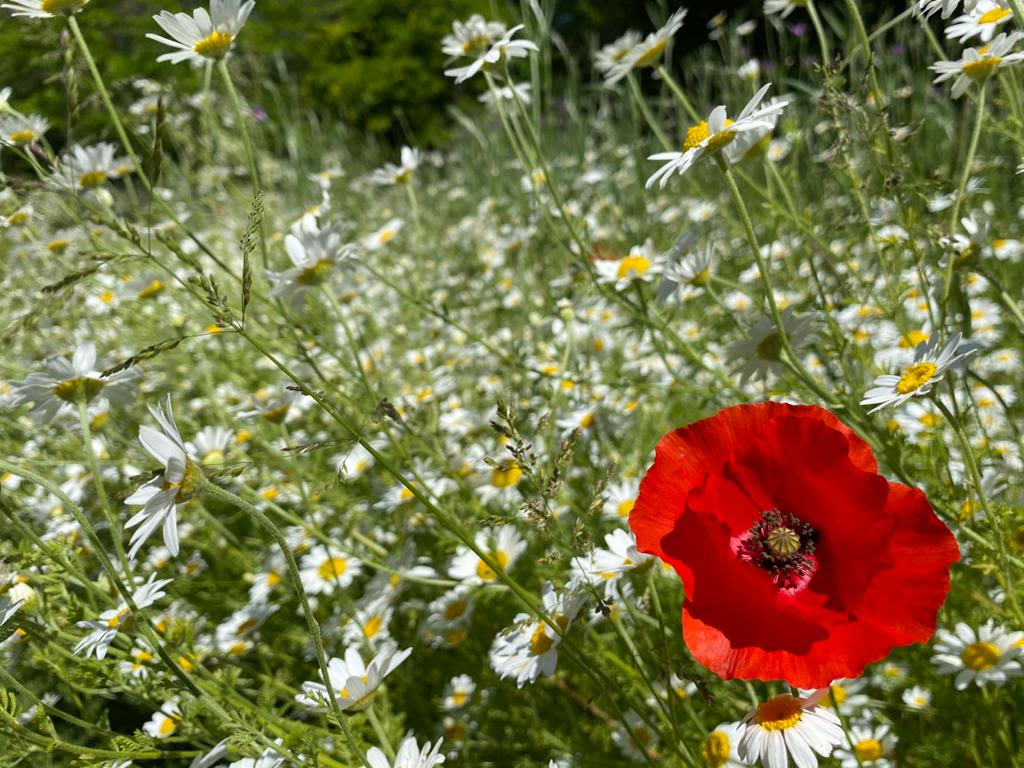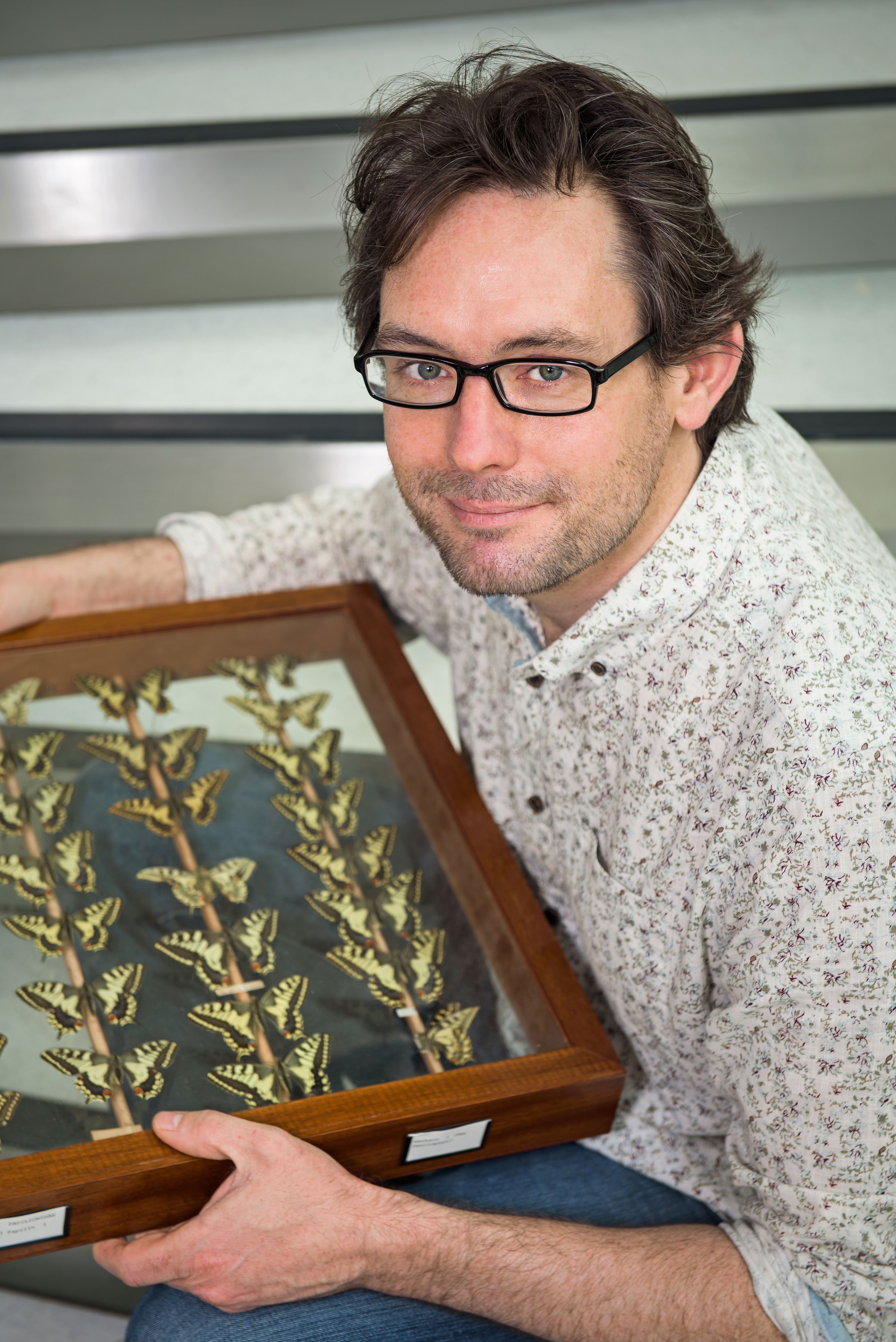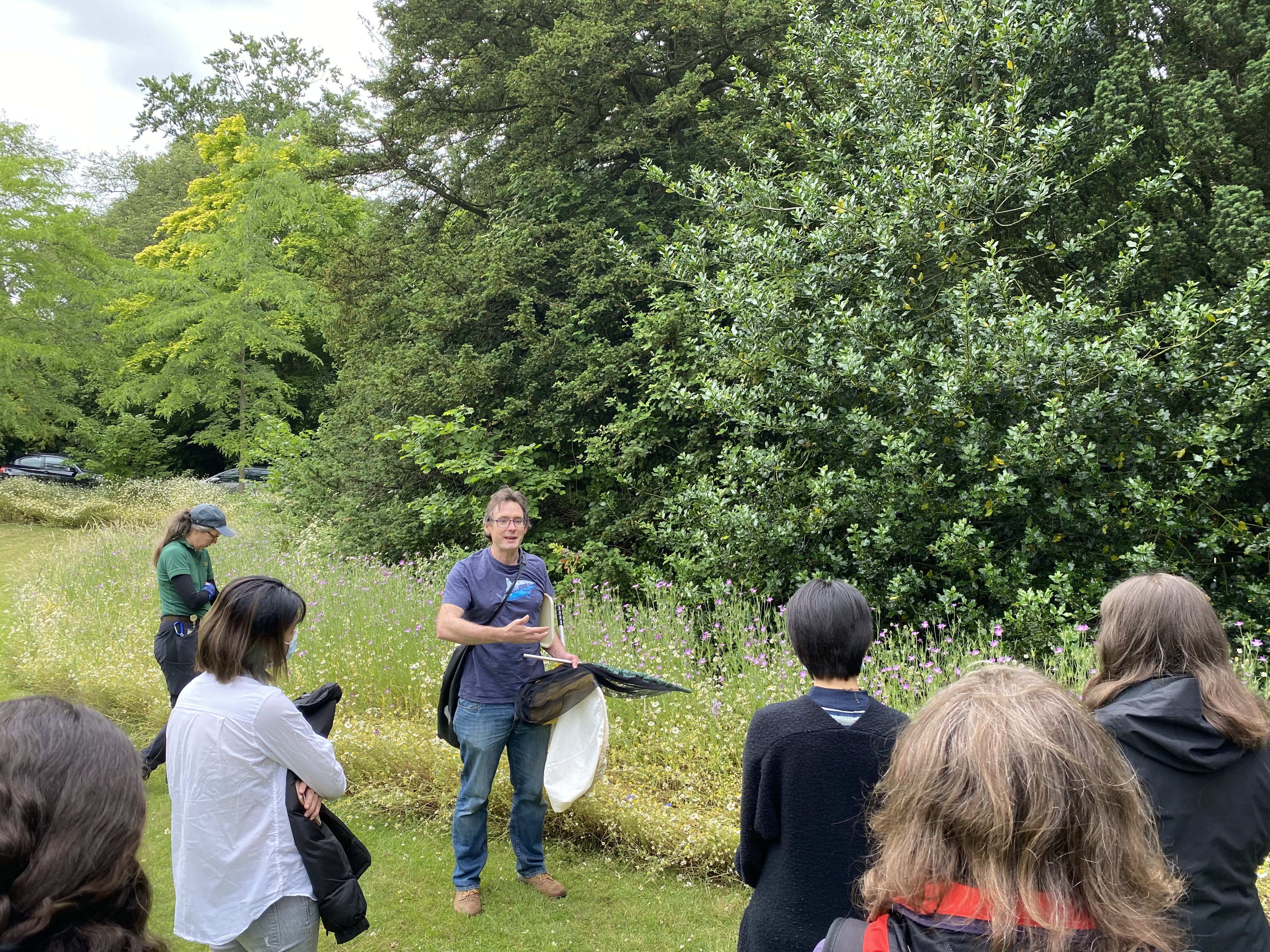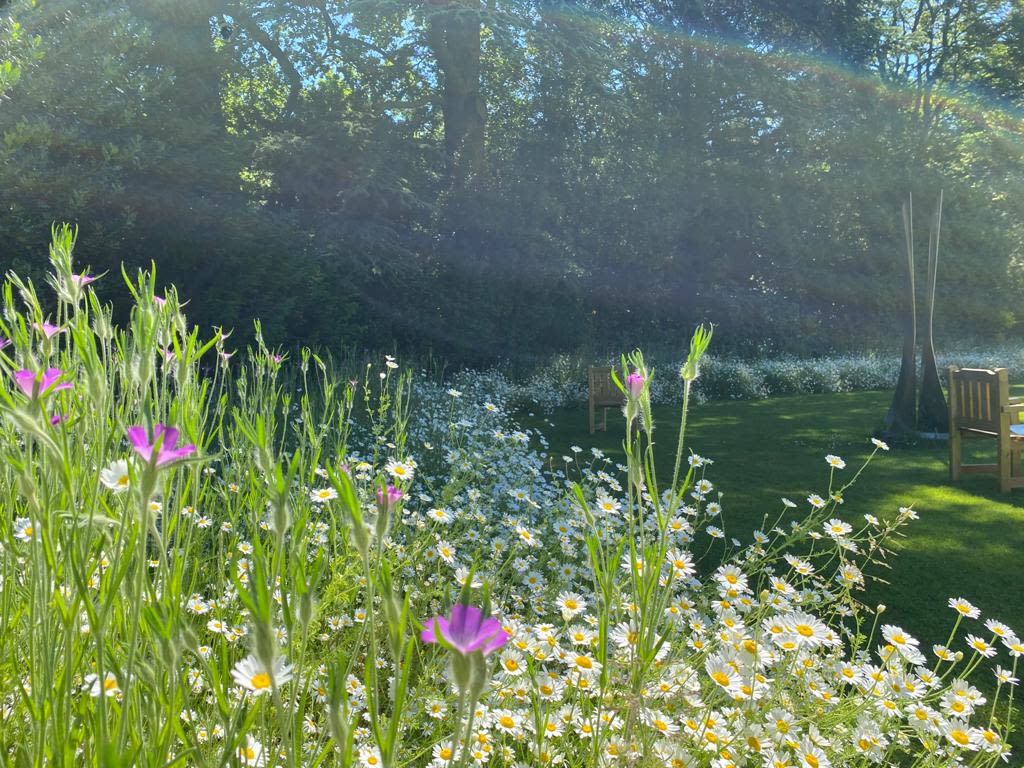A walk on
the wild side
DR ED TURNER

There’s a change afoot in how lawns and grassy areas are being managed around Cambridge. In the past, many of these have been kept close-cropped, but an increasing number are now being left to grow long over the summer or being seeded with annual and perennial wildflower mixes. These provide a whole host of habitats for species, boosting the biodiversity of the city centre.

As an entomologist, I’m particularly interested in the insect species that long-grass areas can encourage. These can be everything from showy butterflies to tiny springtails, attracted by the resources and conditions that such areas provide. For example, abundant nectar and pollen in wildflowers provide food for pollinators – not just honeybees, but a huge range of hoverflies, solitary bees, butterflies and moths.
One of the advantages of having a diverse range of flowers in the grass is that they are available throughout the summer, providing food for different species at different times of the year.
Yet more species feed on the leaves of the plants. I’ve noticed meadow brown and gatekeeper butterflies in some long-grass areas around the city this year. The larvae of these species feed on the grasses themselves, and leaving the grass to grow encourages females to lay more eggs. During the colder months, uncut areas also provide important overwintering sites for invertebrates that burrow under the grass to escape the worst of the winter cold. As insects are food for birds, bats and more, keeping longer grass areas is also likely to benefit these larger species. Finally, these areas aren’t just good for wildlife; they are also important for engaging people in the natural world. With an increasing proportion of people living and growing up in urban environments, having long-grass areas in cities can help to provide everyone with access to everyday biodiversity.

The wildflower borders surrounding Memorial Court are a great example of this. Not only did they look beautiful in the summer, with a mass of camomile and corncockle flowers, but they were also crawling with insects.
On sunny days, I saw the nectar-rich flowers alive with insects, particularly solitary bees and hoverflies, including ‘bumblebee mimics', which look and even sound a bit like bumblebees, protecting them from predators.
The occasional spikes of spear thistle were covered in aphids being tended by black ants, which ‘milk’ the aphids for the honeydew they produce. Closer to the ground, the cover and cooler conditions at the soil surface provided a home for creatures of more subtle beauty, including masses of woodlice, ground beetles and millipedes.

Now that the summer plants have been cut back, there is a chance to see the perennial wildflowers beginning to establish, including lots of cowslips, with their paddle-like leaves, which will flower in April next year and provide food for the next generation of pollinators. So whatever time of year it is, take a closer look at the wildflower areas when you next visit Memorial Court and see what smaller invertebrates you can spot. It doesn’t have to be a sunny day (luckily), there is always something interesting to see.

